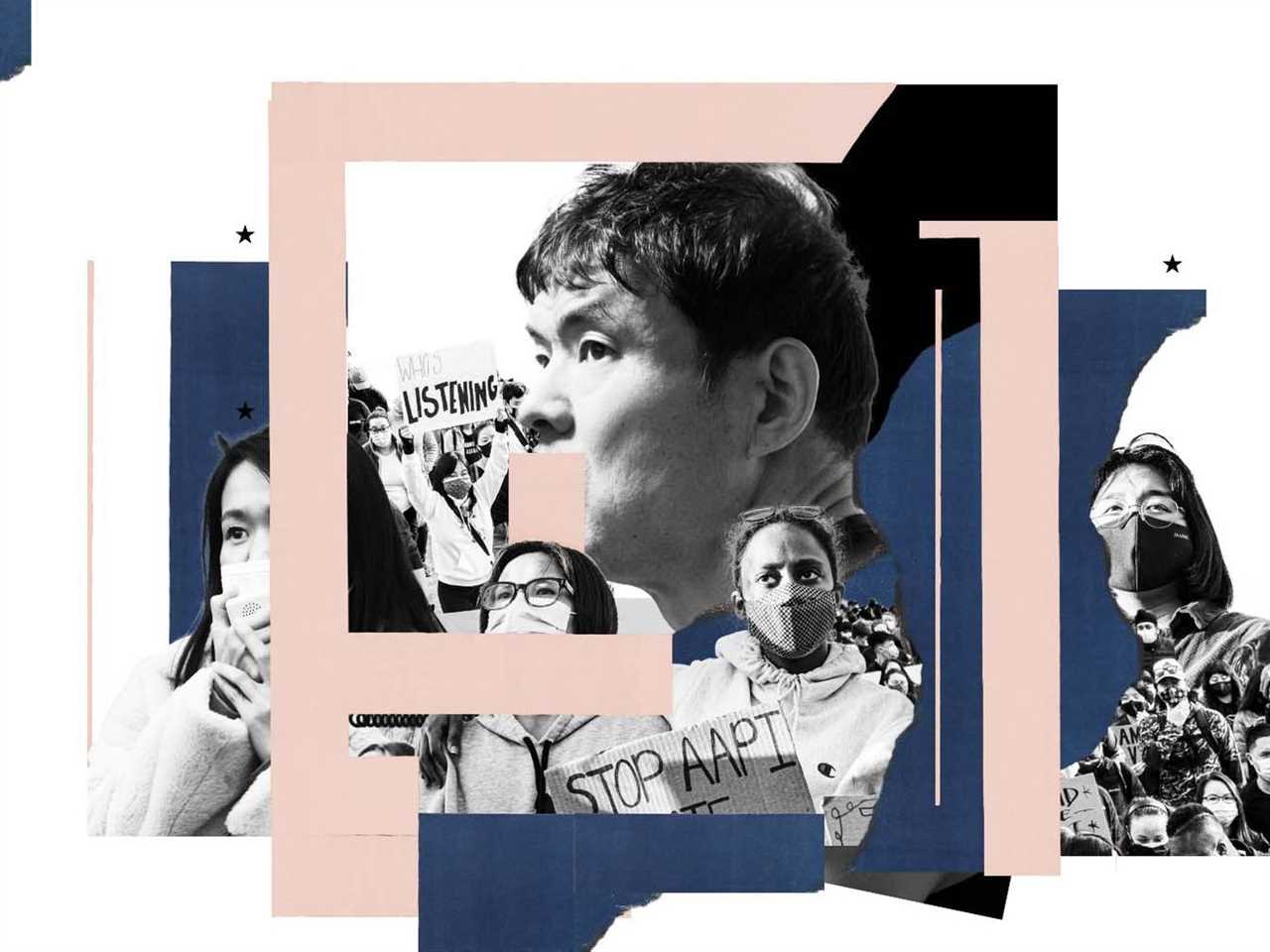
In the year since the Atlanta shootings, the Stop Asian Hate movement dramatically changed awareness of anti-Asian racism. Where does it go from here?
Brianna Cea, a 24-year-old voting rights organizer based in Brooklyn, felt a painful sense of recognition after the Atlanta shootings last March.
These shootings — which occurred at three Atlanta-area spas — took the lives of eight people, including six Asian women. The victims included Daoyou Feng, 44, Hyun Jung Grant, 51, Suncha Kim, 69, Paul Andre Michels, 54, Soon Chung Park, 74, Xiaojie “Emily” Tan, 49, Yong Ae Yue, 63, and Delaina Ashley Yaun, 33.
“Seeing people who look like me being targeted and people not recognizing that they were clearly targeted because of what they looked like was hard,” Cea, who identifies as Thai, Korean, and Chinese American, told Vox.
Initially, both police and the media appeared to accept claims that the shooter, a white man, was not racially motivated, even though the attacks focused on Asian-run businesses, and the rationale he gave was that it was a way to reduce sexual “temptation,” a statement that speaks to the longstanding objectification of Asian women. The fact that people wouldn’t acknowledge the racial aspect of the attacks only added to the trauma of the shootings, Cea emphasizes.
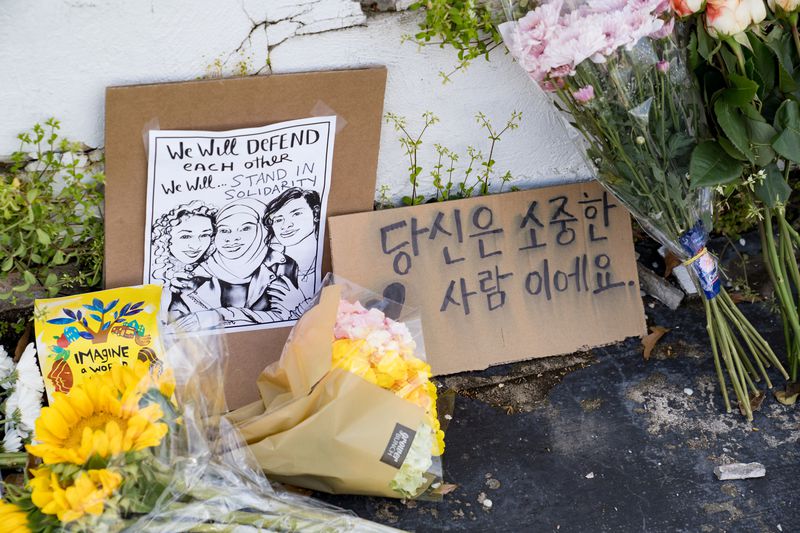
Megan Varner/Getty Images
“To me it was compounding that feeling of constantly feeling invisible, reckoning with that in the media and in the workplace,” says Cea, who serves as the president of Asian American advocacy group OCA-New York and the executive director of GenVote. “In the face of this tragedy, you still go back to this narrative of erasure.”
For Cea and a number of other Asian Americans, Atlanta was a breaking point amid two years of growing anti-Asian violence that took the form of brutal attacks on elderly people, vandalization of businesses, and assaults on the street. Fueled by xenophobic sentiment tied to the coronavirus’s origins in Wuhan, China, and former President Donald Trump’s use of racist terms like “China Virus,” anti-Asian harassment soared in 2020 and 2021. According to Stop AAPI Hate, an organization tracking instances of violence and verbal abuse, there were more than 10,900 incidents reported between March 2020 to December 2021.
The devastation of the Atlanta shootings compelled many Asian Americans to speak out in a new way. In the weeks that followed, rallies erupted across more than 50 cities, and hundreds of thousands of people participated in trainings, petitions, and crowdfunding efforts to support victims and condemn anti-Asian violence. Cea was among those to host a vigil in New York City, which sought to memorialize the victims. The use of hashtags like #StopAsianHate and #StopAAPIHate took off on Twitter and Instagram as well.
What began as a tagline on social media ultimately evolved into a national movement, spurring a reckoning across different industries, prompting new policies at the federal and state levels and transforming broader awareness of anti-Asian racism.
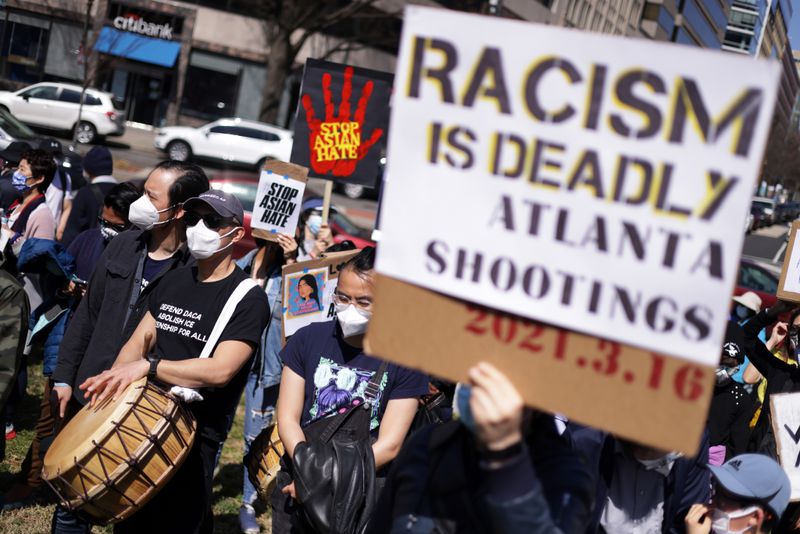
Alex Wong/Getty Images
Approaching the one-year anniversary of the Atlanta attacks, the Stop Asian Hate movement is at a crossroads.
While it’s had significant achievements — including shepherding the passage of a federal hate crimes law, emboldening a new generation of Asian American activists and sparking a dialogue about anti-Asian discrimination — it also faces major questions of where to go next.
Organizers view the policies that have passed as insufficient — and worry that the focus on policing, which some have taken in response to anti-Asian violence, could harm communities of color. As more horrific attacks make headlines, many are still searching for new ways to address the biases that are tied to such violence as well.
“It can’t just be about raising awareness and visibility,” says Turner Willman, the social media director for progressive advocacy group 18MillionRising. “It needs to be coupled with structural change.”
The origins of the Stop Asian Hate movement
In the spring of 2020, Manjusha Kulkarni, head of the AAPI Equity Alliance; Cynthia Choi, the co-director of Chinese for Affirmative Action; and professor Russell Jeung, head of the Asian American Studies Department at San Francisco State started noticing a concerning trend. Increasingly, they were hearing from friends, colleagues, and news reports about a spike in anti-Asian incidents.
After Kulkarni held a press conference about an Asian American middle-schooler in Los Angeles County who was badly beaten by a classmate, the three came together to launch Stop AAPI Hate, a website where people could submit incidents they’ve experienced.
“We needed firsthand data to prove what was happening in the lived experiences of Asian Americans,” Jeung says.
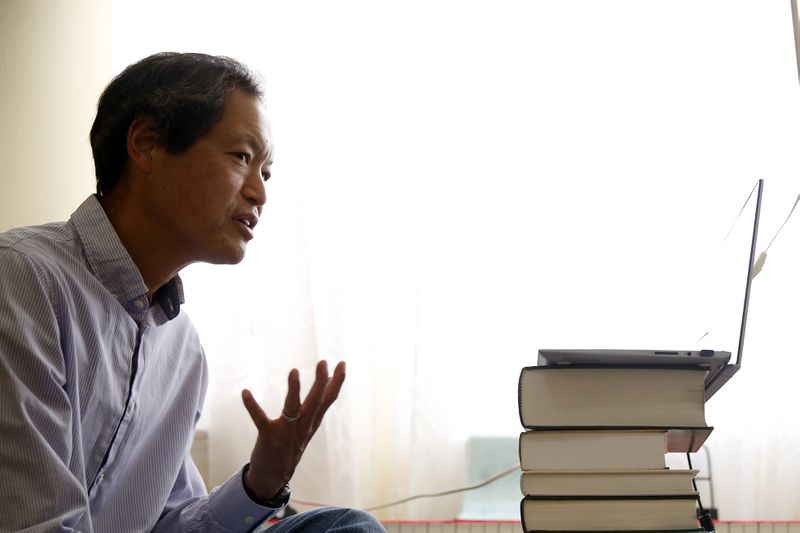
Lea Suzuki/The San Francisco Chronicle via Getty Images
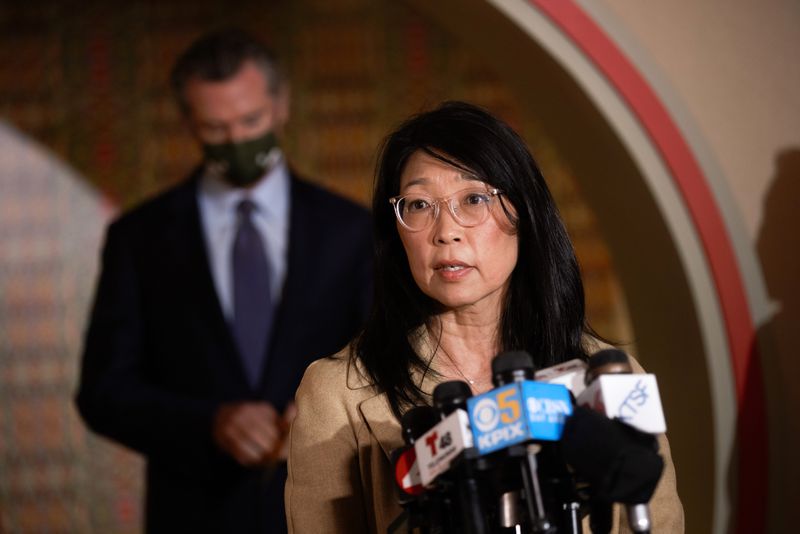
Dai Sugano/MediaNews Group/The Mercury News via Getty Images
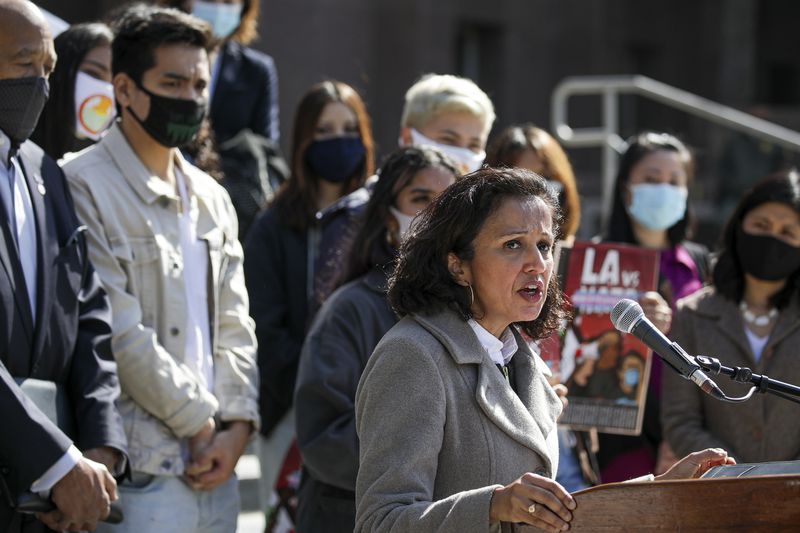
Irfan Khan/Los Angeles Times via Getty Images
Since its launch, Stop AAPI Hate has a steady influx of reports. And other sources have seen a similar uptick: A study by the Center for the Study of Hate and Extremism at CSU San Bernardino found a 339 percent increase in hate crimes toward Asian Americans across several major cities between 2021 and 2020.
This year, the attacks have continued. In recent weeks, Christina Yuna Lee was murdered in New York City’s Chinatown, and multiple Asian women were assaulted by the same person in New York City.
“That’s a reason we started Stop AAPI Hate. We did not want this to be minimized, we wanted to have the numbers. We didn’t want there to be denialism,” Choi previously told Vox.
The movement, meanwhile, built slowly. Across the country, people — including the Stop AAPI Hate team — had been raising the alarm about growing anti-Asian sentiment for months, though it didn’t get more attention until a series of videos capturing brutal attacks against elderly people went viral in February 2021.
These videos, including one calling attention to the killing of 84-year-old Thai American Vicha Ratanapakdee in San Francisco, were amplified by activists like Amanda Nguyen, a longtime advocate against sexual violence, and celebrities including actors Daniel Dae Kim and Daniel Wu, who questioned why there wasn’t more coverage and focus on these attacks.
As frustration about these incidents grew, the Atlanta shootings marked an inflection point, unleashing a wave of protests, demonstrations and public outcry.
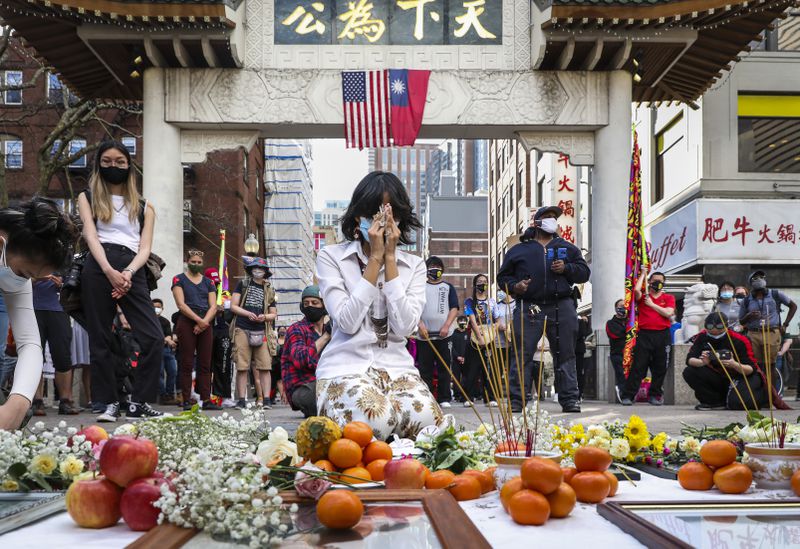
Erin Clark/Boston Globe via Getty Images
The Stop Asian Hate movement changed awareness of anti-Asian racism
One of the biggest achievements of the Stop Asian Hate movement is that it raised awareness about the pervasiveness of anti-Asian racism.
“There has been this narrative over the last many, many years that so many parts of our community don’t face marginalization that we know we’re impacted by,” says Mohan Seshadri, the executive director of the Asian Pacific Islander Political Alliance of Pennsylvania. “We are seeing folks outside of our community waking up to the fact that anti-Asian violence and anti-Asian racism has been baked into our system and our government.”
For decades, the discrimination that Asian Americans have faced — including everything from exclusionary immigration policy to outright erasure — has been rendered invisible. In large part, that’s been due to the “model minority myth.” First popularized in the 1960s, it implies that all Asian people are successful and well-off, obscuring both the diversity within the group as well as the disparities that people experience.
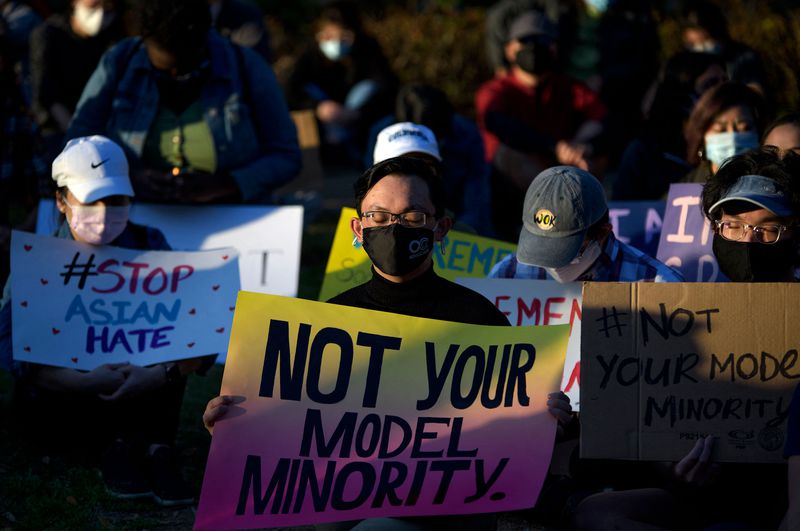
Mark Felix/AFP via Getty Images
But public perception of the problem of anti-Asian racism has changed rapidly.
According to a UCLA-led survey, between 2017 and 2021, the percentage of people who believed Asian Americans experienced significant discrimination more than doubled. The survey, analyzed for Vox by Baylor University’s Jerry Park and Seattle Pacific University’s Joshua Tom, found that 23 percent of people across demographic groups said they believed Asian Americans faced a lot of discrimination in 2021, compared to the 10 percent of people who said the same in a similar poll done after the 2016 election.
In May 2021, following media coverage of anti-Asian attacks, as well as a surge of Stop Asian Hate rallies and protests, 60 percent of people surveyed in an AP-NORC poll also said they believed discrimination against Asian Americans had increased in the last year.
These polls were conducted shortly after interest in the Stop Asian Hate movement took off. And though they don’t prove the movement alone was responsible for changing public opinion, other data points speak to the reach of Stop Asian Hate. As NBC News has reported, Google searches for the term “Asian American” were up 5,000 percent in 2021, and searches for the term “Stop Asian Hate” and “Stop AAPI Hate” also increased. Per tracking by the social media analytics firm Zignal Labs, the #StopAsianHate and #StopAAPIHate hashtags were used on Twitter more than 8.4 million and 2.5 million times, respectively, in 2021.
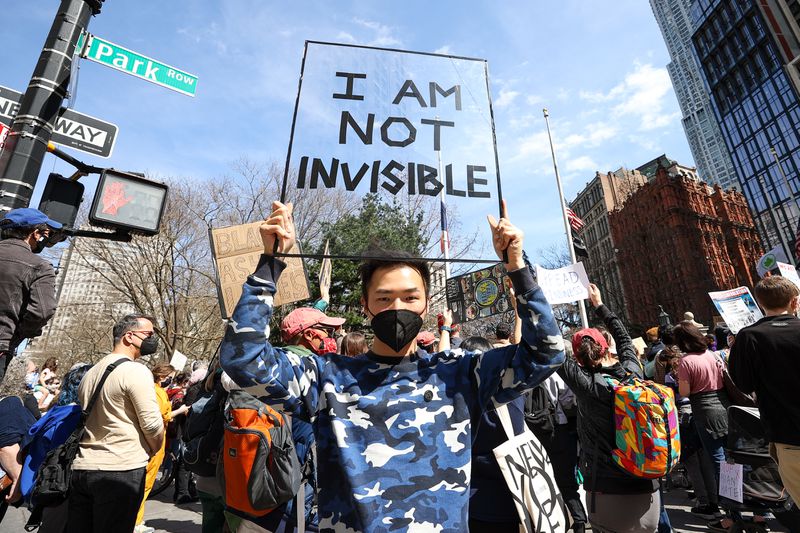
Tayfun Coskun/Anadolu Agency via Getty Images
It’s also forced a new dialogue across industries. Congress, for the first time in three decades, held a hearing focused explicitly on discrimination toward Asian Americans. Former late-night host Jay Leno apologized for jokes he’d made about Asian people eating dogs, which followed years of ignored complaints. And new attention has been placed on how underrepresented Asian Americans have been in film, television, elected office and leadership roles relative to their presence in the US population.
There have been policy wins, too
The movement has fueled some policy wins, though activists are divided on whether certain bills actually address the source of anti-Asian discrimination.
At the federal level, Congress approved the Covid-19 Hate Crimes Act last May, which designated an official at the Justice Department to focus on Covid-19-related hate crimes, provided more funding to law enforcement for hate crimes reporting, and bolstered training resources to help police address hate crimes.
At the time of the bill’s passage, Sen. Mazie Hirono (D-HI) said that the legislation offered “an important signal that Congress is taking anti-Asian racism and hatred seriously.”
Some activists, like Stanley Mark, the senior staff attorney at the Asian American Legal Defense and Education Fund, have also celebrated the law as an important first step. “There is funding there to promote more reporting and strengthen community-based organizations. I do think it’s a beginning,” Mark says.

Kent Nishimura/Los Angeles Times via Getty Images
Others, however, have been more critical, concerned that the legislation doesn’t confront the root causes of bias against Asian Americans, like xenophobic political rhetoric, gaps in education, and a lack of resources across communities. Many worry that it won’t deter future hate crimes and that it could lead to unintended problems, such as the overpolicing of Asian American communities and other communities of color.
“The real question is what do we do with that data [the bill collects]? Is it to reinforce a certain narrative that we need more policing?” Jason Wu, co-chair of GAPIMNY-Empowering Queer & Trans Asian Pacific Islanders, one of over 85 Asian American and Pacific Islander advocacy groups that opposed the bill, previously told Vox.
At the state level, several bills have gained more momentum in the last year. In Illinois and New Jersey, lawmakers passed bills requiring schools teach Asian American history after groups including Asian Americans Advancing Justice Chicago pushed lawmakers to take up the legislation.
“We’re reaching out to school districts all across the state to make sure that this happens and that it’s taught well,” says Grace Pai, the executive director of AAAJ-Chicago. “That requires an army of people paying attention.”
In California, the state legislature also passed an API Equity Budget, which allocates $166.5 million in funding to community-based organizations, including those working to help hate crime victims and to collect demographic data about the Asian American and Pacific Islander community in the state.
Moving forward, organizers — including a coalition called Make Us Visible — are continuing to focus on legislation that will require the teaching of ethnic studies and Asian American history in schools, with states including Florida, Ohio, and Connecticut also weighing such curriculums. Rep. Grace Meng (D-NY) has also introduced federal legislation aimed at requiring the teaching of Asian American history in schools, while the White House has reestablished its initiative on Asian Americans, Native Hawaiians, and Pacific Islanders, which is dedicated to improving language access and data collection.
Asian American organizations have seen a surge in engagement
Another effect of the Stop Asian Hate movement has been a surge of engagement and participation in Asian American organizations in the last year.
Asian Americans Advancing Justice has seen more than 130,000 people participate in bystander trainings it’s held via chapters across the country. And according to a rough estimate from Candid, an organization that tracks funding for nonprofits and foundations, $112.4 million was committed in grants to AAPI organizations in 2021, a 16 percent uptick from the $97.2 million committed in 2020.
“The world of philanthropy for many years had neglected Asian American communities,” says University of California Davis Asian American studies professor Robyn Rodriguez, whose research focuses on Asian American activism. “There’s been a new investment in Asian American communities that hasn’t existed before.”

Ed Jones/AFP via Getty Images
A host of new organizations providing mutual aid and local resources have cropped up as well. In New York City, Soar Over Hate is among the new mutual aid organizations that have launched to help provide everything from public safety resources to health care screenings. In Los Angeles, a new group called Seniors Fight Back offers free self-defense classes to elders.
Nationally, a number of new coalitions have formed between Asian American groups, including the Asian American Leader’s Table, which sought to help organizations around the country respond to anti-Asian violence in different regions.
“Where community exists now but didn’t exist before, that’s an immense accomplishment,” says Tuấn ĐinhJanelle, the director of field at the Southeast Asia Resource Action Center.
The movement has also spawned a new generation of organizers. Grace Xia, 17, and Nathan Duong, 18, are among those who organized their first protests last year in, respectively, San Mateo, California, and Seattle, Washington. Xia says her protest centered the voices of AAPI women leaders and was attended by 300 people. Duong’s rally focused on passing out safety supplies, including emergency whistles and face masks. Both have said they intend to keep up this activism moving forward.
The Stop AAPI Hate movement has strengthened Asian Americans’ affinity with AAPI as a political identity as well. Polls have shown a growing number of AAPI adults are now identifying as members of the broader AAPI community.
There are a lot of paths forward for the movement
Sustaining the energy of the movement, and maintaining a cohesive coalition, are the next hurdles that organizers face.
“The challenge is that you have so many Asian and Pacific Islander organizations out there. To get them to collectively work together and share the same voice is very challenging,” says Connie Chung Joe, the executive director of Asian Americans Advancing Justice Los Angeles.
Among the most common goals of what’s still a decentralized movement: pushing more education about Asian American history, which activists see as key to changing perceptions and combating the erasure that AAPI people have faced.
But issues like policing are still a source of division. The Stop AAPI Hate organization found that 53 percent of Asian Americans and 58 percent of Pacific Islanders named education as an effective solution to address anti-AAPI sentiment, while 30 percent of Asian Americans and 21 percent of Pacific islanders favored more law enforcement.
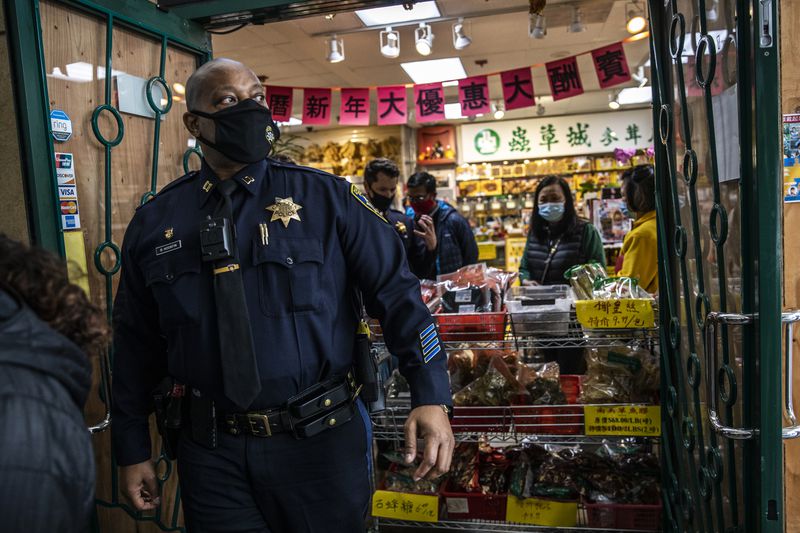
Stephen Lam/The San Francisco Chronicle via Getty Images
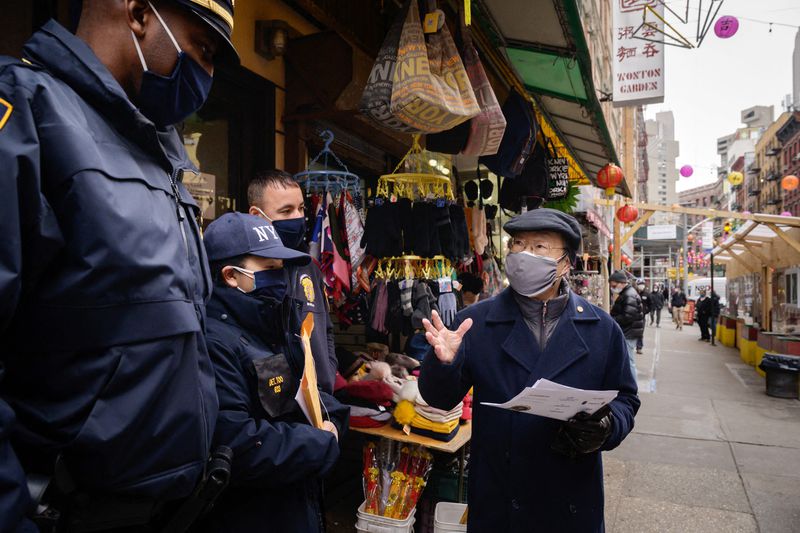
Ed Jones/AFP via Getty Images
“There are some who believe we need to double down on policing and there are some who are very skeptical and vehemently opposed to a solution that focuses on law enforcement because it undermines what we know about the role of policing in Black Lives Matter,” says University of Maryland Asian American Studies professor Janelle Wong.
There’s also a push to broaden the focus of the movement beyond individual incidents of hate that have predominately affected East Asian and Southeast Asian people to confront structural racism that different Asian American groups have faced. This includes the deportations of southeast Asian people and the racial profiling of South Asian people as national security threats in the wake of September 11th.
“What kinds of incidents count is sometimes very narrow, and it ends up leaving people out,” says Willman.
To step up the fight against systemic racism, some activists hope that the Stop AAPI Hate movement can develop its own detailed policy agenda, and point to the BREATHE Act — legislation drafted by the Movement for Black Lives and endorsed by progressive lawmakers such as Reps. Ayanna Pressley (D-MA) and Rashida Tlaib (D-MI) — as a source of inspiration. Among other things, that act would shutter the Immigration and Customs Enforcement Agency as well as the Drug Enforcement Agency, while divesting federal funds from local law enforcement.
“The Movement for Black Lives has the BREATHE Act, a North Star piece of legislation. I think we need one as an Asian American movement, a North Star,” says Sarath Suong, the national director of the Southeast Asian Freedom Network.
Many organizers also believe that working in solidarity with other communities of color is vital to combat a broader system of white supremacy and collectively build political power.
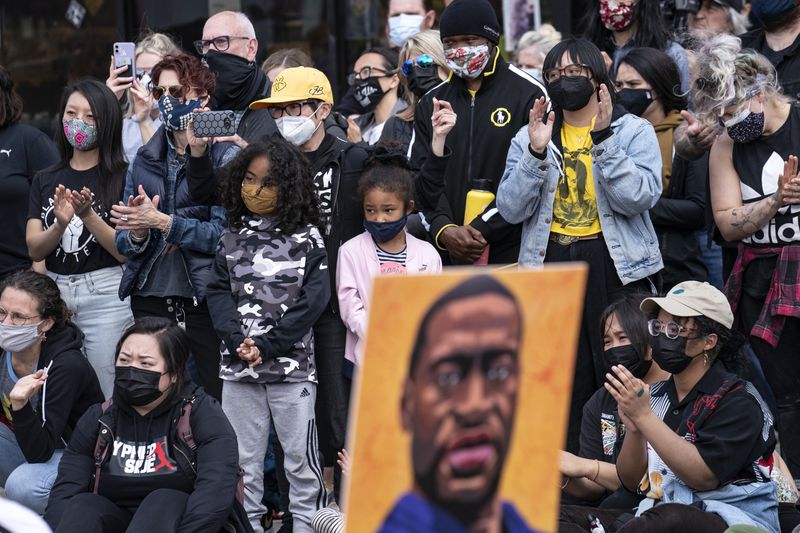
John Minchillo/AP
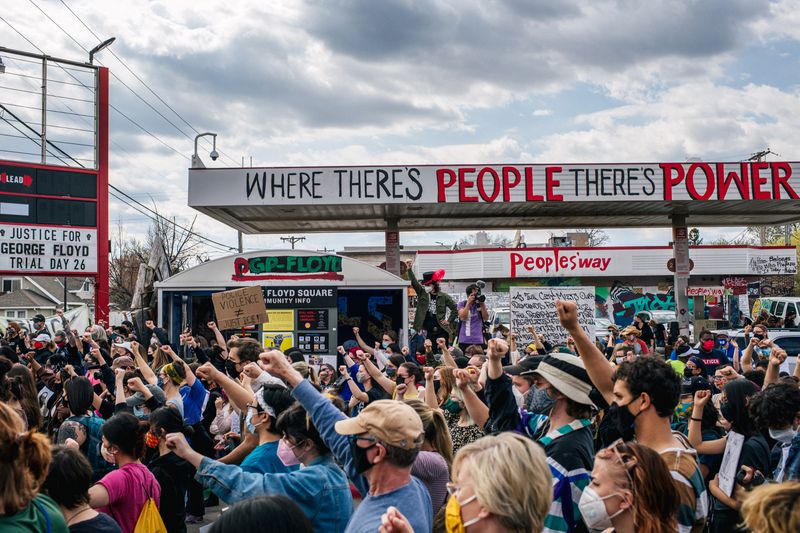
Brandon Bell/Getty Images
Doing so will require acknowledging biases within the Asian American community — and countering them. Some experts, like UC Davis’s Rodriguez, fear media reports that have focused on anti-Asian incidents by Black attackers could activate anti-Blackness among some members of the Asian community.
For now, different groups are approaching next steps in unique ways. The Stop AAPI Hate organization is backing California legislation that would track data about street harassment near public transit, and study it as a public health issue. 18MillionRising is supporting the VISION Act, a California bill that addresses how incarcerated immigrants and refugees are often sent to ICE detention after their release from prison. And organizers in Connecticut have ramped up advocacy for a bill requiring Asian American history in the state’s schools.
Certain activists also aim to harness the energy of this movement to mobilize more Asian American voters during the 2022 elections after the group saw sharp increases in turnout in 2020.
“Despite common assumption that Asian Americans don’t care about politics, or that they are apolitical, what 2021 has shown us is that’s not true,” says Indiana University Asian American studies professor Ellen Wu.
Cea, the voting rights activist, and others ultimately hope the energy from Stop Asian Hate can fuel affirmative expressions of Asian Americans’ strength and political power.
“It did provide a unified rallying cry for folks, but a year later, it’s important that we change the narrative,” she says. “If we continue this idea of Stopping Asian Hate, that perpetuates this idea that we are constant victims of hate. We need to have a more empowering narrative that we are speaking out and fighting back.”
----------------------------------------
By: Li Zhou
Title: The Stop Asian Hate movement is at a crossroads
Sourced From: www.vox.com/22820364/stop-asian-hate-movement-atlanta-shootings
Published Date: Tue, 15 Mar 2022 10:30:00 +0000
Did you miss our previous article...
https://consumernewsnetwork.com/politics-us/-vladimir-putins-restaurant-of-lies






